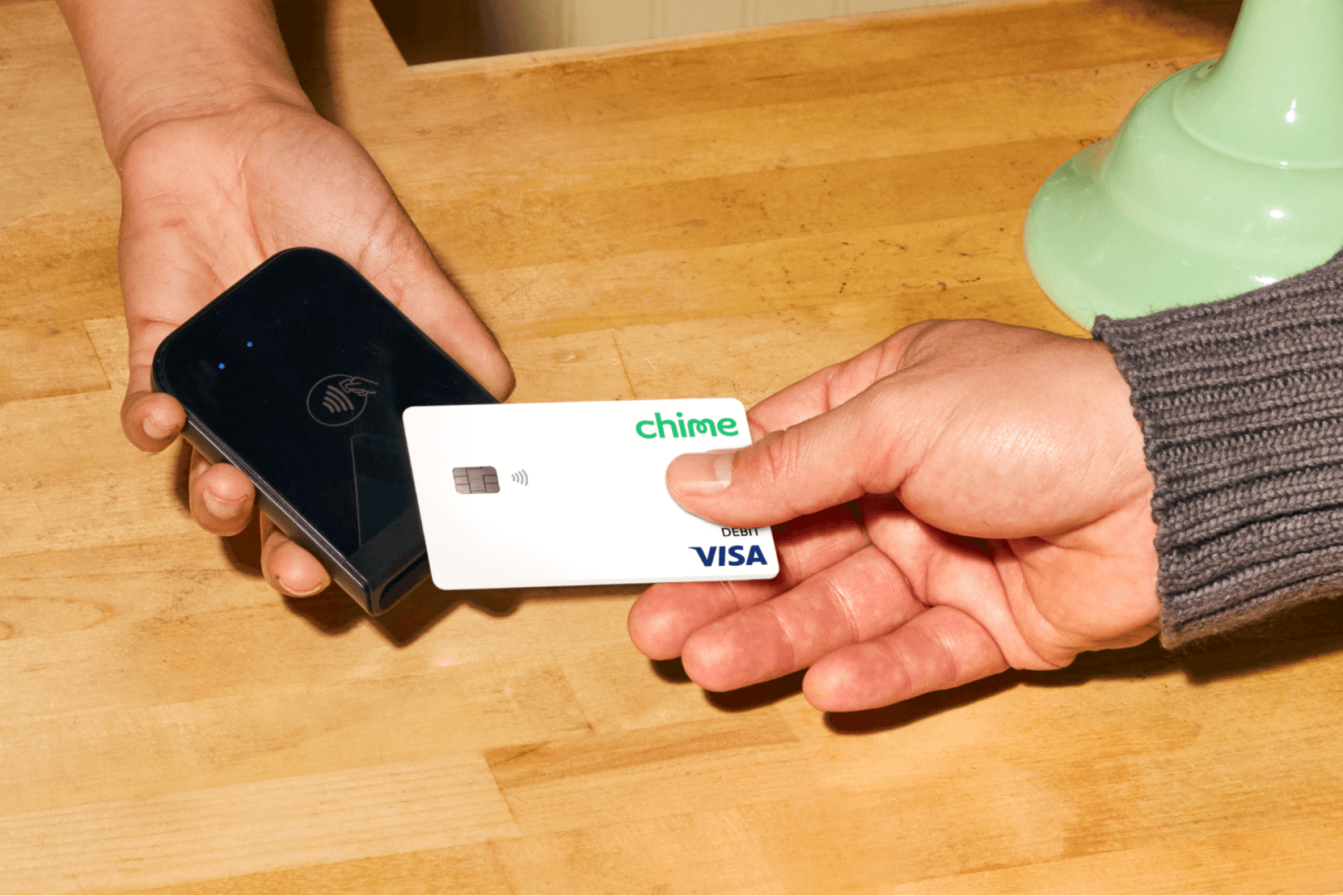Discover how the Big Beautiful Bill reshapes taxes, healthcare, and national spending in 2025. Explore its impacts on personal finances, federal debt, and everyday life in this comprehensive analysis.

Chime IPO analysis: Unpacking the S-1 financial prospectus. Explore key numbers, stock risks, and this fintech’s future investment outlook.

The financial technology (fintech) world has been active, and Chime Financial, Inc., a major player in the field, has officially signaled its plans to go public. The company filed its Amendment No. 1 to Form S-1 with the Securities and Exchange Commission (SEC) on June 2, 2025. This document pulls back the curtain on its financial situation, how it operates, and where it’s headed. For potential investors, everyday consumers, and anyone following the fintech space, the S-1 is packed with important information. This analysis will break down Chime’s S-1, looking at the numbers, market expectations, and the key details surrounding its upcoming Initial Public Offering (IPO).
Chime Financial, Inc. was started in 2012 by Christopher Britt and Ryan King. Their motivation wasn’t a deep love for banking as it was, but rather a sense that the existing system wasn’t working well for many people. In their “Letter from our Founders,” part of the S-1 filing, they describe Chime’s beginning as an “underdog story,” aimed at improving a banking framework they felt was “inadequately serving ‘the vast majority of Americans.'”

Chime’s Mission: To unite everyday people to unlock their financial progress.
This mission targets a large slice of the U.S. population – specifically, the 75% of adults earning up to $100,000 each year. Chime positions itself as a technology company, not a bank in the traditional sense (its banking services are actually provided by The Bancorp Bank, N.A. and Stride Bank, N.A., who are Members of the FDIC). A core idea for Chime is to succeed with its members, not by charging them the kinds of punitive fees often seen in traditional banking, especially for this demographic.
The founders talk about a “two-tier banking system,” where high-income individuals often get better treatment, while other consumers can face numerous fees. Chime’s approach to this was to create a “payments-driven business model” using its own technology platform, which was built for quick innovation and to keep costs down.
Chime’s way of doing business is built on several key ideas:
How Chime Generates Revenue: Unlike traditional banks that heavily rely on net interest margins (the difference between interest earned on assets and interest paid on liabilities) and various fees, Chime’s revenue is primarily payments-driven. The vast majority of its income comes from interchange fees. These are fees paid through card networks (like Visa) whenever a member uses a Chime-branded debit or credit card. This model means Chime’s success is tied to member activity and spending, rather than penalizing members with fees for things like low balances or overdrafts.

Chime offers a range of products designed for the financial needs of its target users:
As of March 2025, Active Members were using an average of 3.3 Chime products.
The S-1 filing gives a detailed look at Chime’s financial performance. Here are some of the key figures that investors and the public will be looking at closely:
Key Operational Metrics (as of or for the period ended March 31, 2025, unless stated otherwise):
Financial Performance Summary (from S-1, Page 23):
| Metric | Year Ended Dec 31, 2022 | Year Ended Dec 31, 2023 | Year Ended Dec 31, 2024 | Q1 2024 (3mo ended Mar 31) | Q1 2025 (3mo ended Mar 31) |
|---|---|---|---|---|---|
| Revenue | $1,008.8 M | $1,278.5 M | $1,673.3 M | $392.0 M | $518.7 M |
| Gross Profit | $794.2 M | $1,058.7 M | $1,465.8 M | $344.5 M | $458.3 M |
| Gross Margin | 79% | 83% | 88% | 88% | 88% |
| Net Income (Loss) | ($470.3 M) | ($203.2 M) | ($25.3 M) | $15.9 M | $12.9 M |
| Net Margin | ($16%) | ($47%) | ($2%) | 4% | 2% |
| Adjusted EBITDA (Non-GAAP) | ($406.1 M) | ($189.3 M) | $15.4 M | $15.4 M | $25.1 M |
| Adjusted EBITDA Margin | ($15%) | ($40%) | 4% | 4% | 5% |
(Note: The S-1 document indicates identical Adjusted EBITDA figures for the full year 2024 and Q1 2024. The data is presented here as it appears in the filing.)
Key Takeaways from the Financials:

Chime sees a large potential market for its services:
Chime’s Growth Strategies:
Here’s what the S-1 tells us about the IPO itself:

Capital Structure and Founder Control: Chime will have a multi-class stock structure after the IPO:
This structure means that the Co-Founders, Mr. Britt and Mr. King, will have significant voting power. Upon completion of the IPO, Mr. Britt is expected to hold approximately 34.7% of the voting power, and Mr. King approximately 31.3%. This voting power could increase over time as they exercise or vest equity awards, potentially giving them even more control over stockholder decisions, including the election of directors and major corporate transactions. This is a common feature in founder-led tech IPOs but is always a key point for investor consideration.
The S-1 filing includes a substantial section on risk factors (pages 24-69). Potential investors should review this section carefully. Key risks highlighted include:

While the S-1 provides Chime’s perspective, the success of its IPO will also hinge on broader market conditions and investor interest in fintech stocks. As of early June 2025, the environment for fintech IPOs has been mixed. After a period of high enthusiasm, the market has become more selective, favoring companies with clear paths to profitability, strong unit economics, and sustainable growth – qualities Chime aims to demonstrate in its S-1.
Factors Influencing Chime’s IPO Expectations:
Analysts will be closely watching Chime’s ability to continue its impressive Active Member growth, increase ARPAM through cross-selling and new product adoption, and effectively manage its transaction and risk losses, especially as its liquidity products grow. The success of ChimeCore in improving efficiency and enabling faster innovation will also be under scrutiny.

Chime’s S-1 filing marks a significant milestone for the company. It has built a strong brand and a large, engaged member base by challenging traditional banking norms and focusing on the needs of everyday Americans. The financial information presented shows a company rapidly growing its revenue and, importantly, making clear progress towards sustainable profitability.
The IPO is expected to provide Chime with substantial capital to pursue its ambitious growth plans, further develop its technology, and potentially expand its market reach. However, operating as a public company will bring increased scrutiny, the pressures of quarterly earnings reports, and the ongoing challenges of intense competition and a changing regulatory landscape.
For investors, Chime offers a chance to invest in a leading fintech innovator with a strong market position and a clear mission. The key considerations will be assessing whether its impressive growth can be maintained, if its member-aligned model can consistently produce strong financial results, and how effectively it can manage the inherent risks of its industry.
The coming weeks and months will be revealing as Chime moves through the IPO process. It is clear that the financial world will be paying close attention as this “underdog” makes its debut on the public stage.
Disclaimer: This blog post is for informational purposes only and should not be considered financial advice. Investing in IPOs carries significant risks. Please consult with a qualified financial advisor before making any investment decisions and review the S-1 filing in its entirety.

Discover how the Big Beautiful Bill reshapes taxes, healthcare, and national spending in 2025. Explore its impacts on personal finances, federal debt, and everyday life in this comprehensive analysis.

Figma’s S-1 filing reveals a company in hyper-growth, with revenue reaching $700 million, gearing up to IPO on the NYSE.

AST Spacemobile’s newest ASIC chip promises 10X the network capacity, 120 Mbps speeds — check out what it means for the company!
Chime IPO analysis: Unpacking the S-1 financial prospectus. Explore key numbers, stock risks, and this fintech’s future investment outlook.

The financial technology (fintech) world has been active, and Chime Financial, Inc., a major player in the field, has officially signaled its plans to go public. The company filed its Amendment No. 1 to Form S-1 with the Securities and Exchange Commission (SEC) on June 2, 2025. This document pulls back the curtain on its financial situation, how it operates, and where it’s headed. For potential investors, everyday consumers, and anyone following the fintech space, the S-1 is packed with important information. This analysis will break down Chime’s S-1, looking at the numbers, market expectations, and the key details surrounding its upcoming Initial Public Offering (IPO).
Chime Financial, Inc. was started in 2012 by Christopher Britt and Ryan King. Their motivation wasn’t a deep love for banking as it was, but rather a sense that the existing system wasn’t working well for many people. In their “Letter from our Founders,” part of the S-1 filing, they describe Chime’s beginning as an “underdog story,” aimed at improving a banking framework they felt was “inadequately serving ‘the vast majority of Americans.'”

Chime’s Mission: To unite everyday people to unlock their financial progress.
This mission targets a large slice of the U.S. population – specifically, the 75% of adults earning up to $100,000 each year. Chime positions itself as a technology company, not a bank in the traditional sense (its banking services are actually provided by The Bancorp Bank, N.A. and Stride Bank, N.A., who are Members of the FDIC). A core idea for Chime is to succeed with its members, not by charging them the kinds of punitive fees often seen in traditional banking, especially for this demographic.
The founders talk about a “two-tier banking system,” where high-income individuals often get better treatment, while other consumers can face numerous fees. Chime’s approach to this was to create a “payments-driven business model” using its own technology platform, which was built for quick innovation and to keep costs down.
Chime’s way of doing business is built on several key ideas:
How Chime Generates Revenue: Unlike traditional banks that heavily rely on net interest margins (the difference between interest earned on assets and interest paid on liabilities) and various fees, Chime’s revenue is primarily payments-driven. The vast majority of its income comes from interchange fees. These are fees paid through card networks (like Visa) whenever a member uses a Chime-branded debit or credit card. This model means Chime’s success is tied to member activity and spending, rather than penalizing members with fees for things like low balances or overdrafts.

Chime offers a range of products designed for the financial needs of its target users:
As of March 2025, Active Members were using an average of 3.3 Chime products.
The S-1 filing gives a detailed look at Chime’s financial performance. Here are some of the key figures that investors and the public will be looking at closely:
Key Operational Metrics (as of or for the period ended March 31, 2025, unless stated otherwise):
Financial Performance Summary (from S-1, Page 23):
| Metric | Year Ended Dec 31, 2022 | Year Ended Dec 31, 2023 | Year Ended Dec 31, 2024 | Q1 2024 (3mo ended Mar 31) | Q1 2025 (3mo ended Mar 31) |
|---|---|---|---|---|---|
| Revenue | $1,008.8 M | $1,278.5 M | $1,673.3 M | $392.0 M | $518.7 M |
| Gross Profit | $794.2 M | $1,058.7 M | $1,465.8 M | $344.5 M | $458.3 M |
| Gross Margin | 79% | 83% | 88% | 88% | 88% |
| Net Income (Loss) | ($470.3 M) | ($203.2 M) | ($25.3 M) | $15.9 M | $12.9 M |
| Net Margin | ($16%) | ($47%) | ($2%) | 4% | 2% |
| Adjusted EBITDA (Non-GAAP) | ($406.1 M) | ($189.3 M) | $15.4 M | $15.4 M | $25.1 M |
| Adjusted EBITDA Margin | ($15%) | ($40%) | 4% | 4% | 5% |
(Note: The S-1 document indicates identical Adjusted EBITDA figures for the full year 2024 and Q1 2024. The data is presented here as it appears in the filing.)
Key Takeaways from the Financials:

Chime sees a large potential market for its services:
Chime’s Growth Strategies:
Here’s what the S-1 tells us about the IPO itself:

Capital Structure and Founder Control: Chime will have a multi-class stock structure after the IPO:
This structure means that the Co-Founders, Mr. Britt and Mr. King, will have significant voting power. Upon completion of the IPO, Mr. Britt is expected to hold approximately 34.7% of the voting power, and Mr. King approximately 31.3%. This voting power could increase over time as they exercise or vest equity awards, potentially giving them even more control over stockholder decisions, including the election of directors and major corporate transactions. This is a common feature in founder-led tech IPOs but is always a key point for investor consideration.
The S-1 filing includes a substantial section on risk factors (pages 24-69). Potential investors should review this section carefully. Key risks highlighted include:

While the S-1 provides Chime’s perspective, the success of its IPO will also hinge on broader market conditions and investor interest in fintech stocks. As of early June 2025, the environment for fintech IPOs has been mixed. After a period of high enthusiasm, the market has become more selective, favoring companies with clear paths to profitability, strong unit economics, and sustainable growth – qualities Chime aims to demonstrate in its S-1.
Factors Influencing Chime’s IPO Expectations:
Analysts will be closely watching Chime’s ability to continue its impressive Active Member growth, increase ARPAM through cross-selling and new product adoption, and effectively manage its transaction and risk losses, especially as its liquidity products grow. The success of ChimeCore in improving efficiency and enabling faster innovation will also be under scrutiny.

Chime’s S-1 filing marks a significant milestone for the company. It has built a strong brand and a large, engaged member base by challenging traditional banking norms and focusing on the needs of everyday Americans. The financial information presented shows a company rapidly growing its revenue and, importantly, making clear progress towards sustainable profitability.
The IPO is expected to provide Chime with substantial capital to pursue its ambitious growth plans, further develop its technology, and potentially expand its market reach. However, operating as a public company will bring increased scrutiny, the pressures of quarterly earnings reports, and the ongoing challenges of intense competition and a changing regulatory landscape.
For investors, Chime offers a chance to invest in a leading fintech innovator with a strong market position and a clear mission. The key considerations will be assessing whether its impressive growth can be maintained, if its member-aligned model can consistently produce strong financial results, and how effectively it can manage the inherent risks of its industry.
The coming weeks and months will be revealing as Chime moves through the IPO process. It is clear that the financial world will be paying close attention as this “underdog” makes its debut on the public stage.
Disclaimer: This blog post is for informational purposes only and should not be considered financial advice. Investing in IPOs carries significant risks. Please consult with a qualified financial advisor before making any investment decisions and review the S-1 filing in its entirety.

Discover how the Big Beautiful Bill reshapes taxes, healthcare, and national spending in 2025. Explore its impacts on personal finances, federal debt, and everyday life in this comprehensive analysis.

Figma’s S-1 filing reveals a company in hyper-growth, with revenue reaching $700 million, gearing up to IPO on the NYSE.

AST Spacemobile’s newest ASIC chip promises 10X the network capacity, 120 Mbps speeds — check out what it means for the company!

US Stablecoin Bill (GENIUS Act) nears passage, promising enhanced regulation, stability, and investor confidence. Analyze its impact on the cryptocurrency market and financial future.
